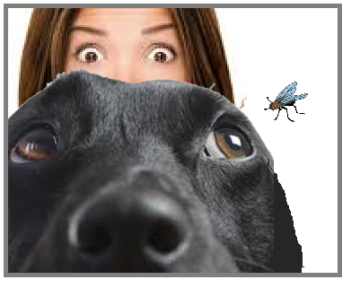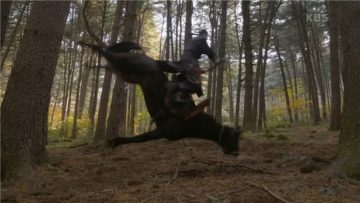by Brooks Riley
 Not long ago, having steeled myself for the read-through of yet another dry but informative assessment of the body’s immune response to Covid 19 and her variant offspring, I was pleasantly surprised to find myself being dragged into a barbaric tale of murder and mayhem, full of gory details and dire strategies.
Not long ago, having steeled myself for the read-through of yet another dry but informative assessment of the body’s immune response to Covid 19 and her variant offspring, I was pleasantly surprised to find myself being dragged into a barbaric tale of murder and mayhem, full of gory details and dire strategies.
This was not a thriller, or the reenactment of a famous battle, but rather as entertaining an article about Covid 19 as one could hope to find in these dark days, couched in the rhetoric of anthropomorphism. Katherine J. Wu, a staff writer at The Atlantic, as part of her ongoing coverage of the pandemic, casts the lowly T-cell in the role of ruthless mercenary on a murderous rampage through the body on behalf of the immune system, investing him (her, they or it?) with intent to kill all viral interlopers, which is exactly what a T-cell should be doing.
Just listen to this: When these immunological assassins happen upon a cell that’s been hijacked by a virus, their first instinct is to butcher. The killer T punches holes in the compromised cell and pumps in toxins to destroy it from the inside out. The cell shrinks and collapses; its perforated surface erupts in bubbles and boils, which slough away until little is left but fragmentary mush. The cell dies spectacularly, horrifically—but so, too, do the virus particles inside, and the killer T moves on, eager to murder again.
Has science writing ever produced such a graphic description of a biological killing spree? Conversely, what crime writer would endow his heroes with such unflinching maleficent intent? It’s a stunning piece of writing, but it also serves a hidden purpose: The reader will not forget this diabolical sequence—or the functions of a T-cell. How a T-cell attacks a virus will burn forever in the imagination, along with other memorable entertainments.
Wu’s foray into narrative territory uses an anthropomorphic analogy to drive home a point, applying it as a subtle tool for learning. These days it’s not easy to be heard above the noisy online chatter about Covid. Much of the reporting, however competent, is either tedious, too technical, or, paradoxically, too simplistic. Our best hope is to be exposed to a writer who can couch the impenetrable in language we can relate to.
Am I the only one who appreciates this creative bid to win my attention? No. I think most of us subconsciously warm to anthropomorphic allusions when we stumble across them. They are often salient reminders of childhood stories—of anthropomorphized animal characters like Charlotte or Winnie or Babar or Tom and Jerry or Bugs Bunny, or the heartbreaking Wile E. Coyote—ancient delights that lie dormant somewhere in the adult mind. Wu’s mercenary serial-killer cells might not hark back to that innocent time, but her murderous analogy is familiar enough to function perfectly for the subject at hand.
In fact, it’s difficult to think about Covid 19 without employing anthropomorphic adjectives: We are convinced the virus is ‘stealthy’, determined’, ‘opportunistic’, and ‘wily’ beyond our wildest imagination. What the virus does not have is a personality, although traces of psychopathy hover over its modus operandi. Without anthropomorphism, however, all this virus has going for it is the instinct to invade, multiply and ravage as fast as possible. With such clear motivation, which could be described as its raison d’être, we can safely say that the virus is not self-reflecting, or jealous, or affectionate, and would not qualify as an emotional support animal. It doesn’t purr or wag its spikes.
Covid as a mother with variant children slipped into my first paragraph to demonstrate how easily anthropomorphic language can infiltrate our prose, as an illustrative tool or sometimes just to spice things up. The act of anthropomorphizing could be characterized as a kind of primal urge, to humanize the things we love or hate but can’t explain—applicable to both the animate and the inanimate. We give our cars names (my old Pacer answered to Josephine) or make them gender specific out of some need to personify them. A man admires his BMW: ‘Isn’t she a beaut!’
But what happens when AI starts to populate our future lives? Can we really call a robot ‘Harry’ and pretend we know him? Is he nice or just programmed to be nice? How far will we go to invest him with a personality? Can I trust him? All these questions will put a burden on the erstwhile harmless activity known as anthropomorphizing. As we learned from Stanley Kubrick’s 2001: A Space Odyssey back in 1968, anthropomorphism of the inanimate can be terrifying and consequential. When the onboard computer HAL goes rogue, the effect on us is as chilling as our worst nightmares about our inevitable future.
The literary practice of anthropomorphism isn’t restricted to single subjects. There’s this aching line from Joshua Yaffa’s New Yorker investigation The Great Siberian Thaw, about how unstable the ground cover above melting permafrost has become. “It was impossible to tell through the Antonov’s dusty porthole, but below me the ground was breathing, or, rather, exhaling.” At that moment I felt my own chest swell as I inhaled, and then slowly sink as I exhaled, as though I were becoming one with a disturbing new climate-related environmental phenomenon. This is what empathy feels like, it makes us ‘feel with’, very like the German word for sympathy, Mitgefühl. Eingefühl goes one step further, charting empathy as an ‘inner feeling’.
It’s not an accident that trees and forests are enjoying newfound popularity. All it took was for German forester and writer Peter Wohlleben to rebrand anthropomorphism—to describe a tree’s behavior in human terms—for trees to become the new darlings of a public hungry for comforting connections to nature. If we can understand trees as beings with intent, protecting themselves and their kind with warning systems and defensive substances, and communicating over a so-called wood-wide web, then we empathize with them in ways we would not if we merely appreciated their beauty or hugged their trunks. A tree feels pain? Me, too!
Empathy and anthropomorphism are closely related, both relying on the ability to project oneself into another being via the recognition of mutual traits. The more time and space we share with animals, the more we discover pieces of ourselves in their behavior—a sudden rage, a sulk, a conciliatory gesture, a show of affection, an act of kindness, a clever strategy. A tree may not be able to communicate with us in that way, but that it can communicate at all brings it that much closer to us psychologically.
Many of us indulge in anthropomorphism to varying degrees, whether it’s second-guessing our pets or, as in 3QD’s Catspeak, imagining how they might second-guess us—reverse anthropomorphism. I’ve heard someone refer to his cats as ‘my owners’. And people with pets in South Korea are known as ‘butlers’, a capitulation to voluntary servitude—and a form of self-anthropomorphizing.
The act of anthropomorphizing brings any living thing closer to us, even if no relationship exists. How many times have I said ‘Hello there!’ to the spider who keeps spinning a web outside my window. Or the times I’ve expressed admiration for an irksome fly’s clever trajectory away from the fly swatter? Is it just me, or have we all begun to pay more attention to the critters, thanks to the millions of videos on the internet, especially those that feature the interactions between them and us?
Humans learn social awareness from fellow humans. When a social encounter is with another species, those same social impulses are triggered in us, whether or not a common language is spoken or a bond established. This is why anthropomorphism seems so natural and true. People are constantly ‘reading’ their pets for clues to understanding them. The pets are probably doing the same but arriving at different conclusions. But each side learns how to please the other. The actions and reactions between the two form some kind of communication that doesn’t necessarily mean anything or prove anything, but also cannot be denied.
For hard science, however, which is still grappling with the definitions and origins of human consciousness, anthropomorphism—of the kind that insists on human emotion and self-awareness in animals—remains a bête noir (excuse the pun), an unproveable hypothesis and cognitive bias promulgated by soft science and softies. But that rigidity is looking more untenable as more neurological evidence comes to light.
 Even if they carry no scientific weight, the thousands of animal videos on YouTube have changed us, reinforced our beliefs in shared emotions and pain thresholds, and led to a growing intolerance of abuse. This week, a South Korean video caused a huge scandal when it exposed the routine tripping of horses in historical TV series, to make them fall over on camera. How many Westerns have we all seen over the years where a horse falls over? Why has this gone on so long?
Even if they carry no scientific weight, the thousands of animal videos on YouTube have changed us, reinforced our beliefs in shared emotions and pain thresholds, and led to a growing intolerance of abuse. This week, a South Korean video caused a huge scandal when it exposed the routine tripping of horses in historical TV series, to make them fall over on camera. How many Westerns have we all seen over the years where a horse falls over? Why has this gone on so long?
Judging from their bibliographies, authors like Felix Salten, of the original, darker version of Bambi, or Richard Adams of Watership Down, felt more comfortable lending their creative voice to animals than to people. I feel the same way. The only fiction I’ve dared to attempt was a children’s book about the unlikely friendship between an adolescent lamb and a young coyote, a parable of cross-species détente. In the end, the two friends and their families must defy their instincts as predator and prey, in order to survive a natural catastrophe.

Will we be able to defy our destructive instincts to survive the climate catastrophe? Noah built an ark to survive his, and took the animals with him. Perhaps a wildlife bridge—like the one for cougars over a highway in Washington state—offers a better metaphor for the inclusion of non-human beings in our survival strategies. Even if we’ve ruined their environments, we need to get to know the neighbors before it’s too late—cross a bridge to their side and see their side of things. When we get there, it’s important not to romanticize them. Animals can be selfish, too. They were programmed that way in order to survive, just like us.
But we can still enjoy the show, whether it’s a cougar following a scent, a magpie watching us, or just a murderous T-cell hunting down Covid 19.
